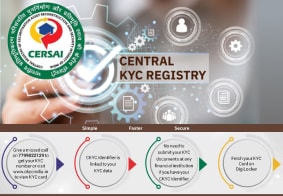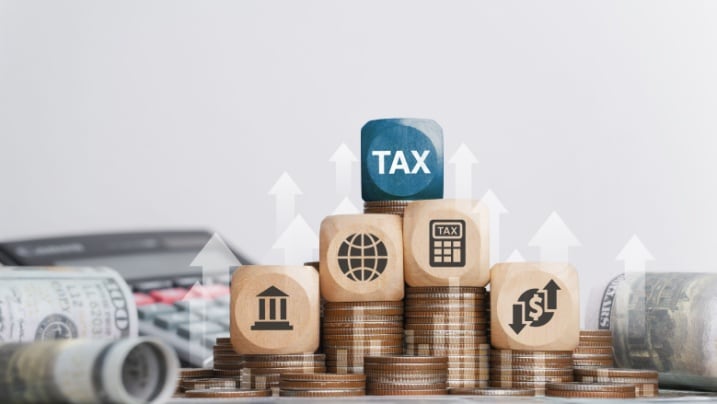CKYC Registry
-
Customer Service Contact us Service request Locate a branch
Find all the help you need
Scan the QR, get our app, and find help on your fingertips

Help CenterSupport topics, Contact us, FAQs and more
-
Login
Are you ready for an upgrade?
Login to the new experience with best features and services
-
Login
Are you ready for an upgrade?
Login to the new experience with best features and services
- Accounts
-
Deposits
IDFC FIRST Bank Deposits
View all Deposits -
Loans
IDFC FIRST Bank Loans
View all Loans - Wealth & Insure
-
Payments
IDFC FIRST Bank Payments
View all Payments -
Cards
IDFC FIRST Bank Cards
View all Cards - Blogs
- Corporate Account
-
Cash Management Services
IDFC FIRST Bank Cash Management Services
View all Cash Management Services - Supply Chain Finance
-
Corporate Lending
IDFC FIRST Bank Lending
View all -
Treasury
IDFC FIRST Bank Treasury
See more details - NBFC Financing
Support topics, Contact us, FAQs and more
- IDFC FIRST Bank Accounts
-
Savings Account
-
Corporate Salary
Account -
Senior Citizens
Savings Account -
First Power
Account -
Current Account
-
NRI Savings
Account -
TASC Institutional
Account -
Savings Account
Interest Calculator
- IDFC FIRST Bank Deposits
-
Fixed Deposit
-
Recurring Deposit
-
NRI Fixed Deposit
-
Safe Deposit Locker
-
FD Calculator
-
RD Calculator
- IDFC FIRST Bank Loans
-
Personal Loan
-
Consumer Durable
Loan -
Home Loan
-
Business Loan
-
Professional Loan
-
Education Loan
-
New Car Loan
-
Pre-owned Car Loan
-
Two Wheeler Loan
-
Pre-owned Two
Wheeler Loan -
Commercial Vehicle
Loan -
Gold Loan
-
Loan Against Property
-
Loan Against Securities
-
Easy Buy EMI card
-
Personal Loan
EMI Calculator -
Education Loan
EMI Calculator -
Home Loan
EMI Calculator -
EMI Calculator
-
Personal Loan Eligibility Calculator
- IDFC FIRST Bank Wealth & Insure
-
FIRST Select
-
FIRST Wealth
-
FIRST Private
-
Mutual Funds
-
Sovereign Gold Bond
-
Demat Account
-
Term Insurance
-
Life Insurance
-
Health Insurance
-
General Insurance
-
Bonds
-
Loan Against
Securities -
Portfolio Management
Service
- IDFC FIRST Bank Payments
-
FASTag
-
Credit Card
Bill Payments -
UPI
-
Funds Transfer
-
Forex Services
-
Pay Loan EMI
- IDFC FIRST Bank Cards
-
Ashva :
Metal Credit Card -
Mayura :
Metal Credit Card -
FIRST Millennia
Credit Card -
FIRST Classic
Credit Card -
FIRST Select
Credit Card -
FIRST Wealth
Credit Card -
FIRST WOW!
Credit Card -
Deals
-
Debit Cards
-
Co-branded Cards
-
Credit Card
EMI Calculator -
FIRST Corporate
Credit Card -
FIRST Purchase
Credit Card -
FIRST Business
Credit Card
- Premium Metal Credit Cards
-
AshvaLifestyle1% Forex₹2,999
-
MayuraLifestyleZero Forex₹5,999
-
FIRST PrivateInvite Only
- Best for travellers
-
MayuraZero ForexMetal₹5,999
-
Ashva1% ForexMetal₹2,999
-
FIRST WOW!Zero ForexTravelLifetime Free
-
FIRST SWYPTravel OffersEMI₹499
-
FIRST Select1.99% ForexLifestyleLifetime Free
-
FIRST Wealth1.5% ForexLifestyleLifetime Free
-
Club VistaraTravelLifestyle₹4,999
-
IndiGo IDFC FIRST Dual Credit CardTravelLifestyle₹4,999
- Max benefits, Free for life
-
FIRST Classic10X RewardsShoppingNever Expiring Rewards
-
FIRST Millennia10X RewardsShoppingNever Expiring Rewards
-
FIRST Select10X RewardsLifestyle1.99% Forex
-
FIRST Wealth10X RewardsLifestyle1.5% Forex
-
FIRST WOW!RewardsTravelZero Forex
-
LIC ClassicRewardsInsuranceShopping
-
LIC SelectRewardsInsuranceShopping
- Reward Multipliers
-
AshvaLifestyleMetal₹2,999
-
MayuraLifestyleZero Forex₹5,999
-
FIRST ClassicNever Expiring RewardsShoppingLifetime Free
-
FIRST MillenniaNever Expiring RewardsShoppingLifetime Free
-
FIRST SelectNever Expiring RewardsLifestyleLifetime Free
-
FIRST WealthNever Expiring RewardsLifestyleLifetime Free
- Rewards & Credit on UPI
-
FIRST Power+FuelUPI₹499
-
FIRST PowerFuelUPI₹199
-
FIRST EA₹NVirtual1% Cashback₹499
-
FIRST DigitalVirtualUPI₹199
-
IndiGo IDFC FIRST Dual Credit CardUPITravelDual cards
- Fuel and Savings
-
FIRST PowerRewardsUPI₹199
-
FIRST Power+RewardsUPI₹499
-
LIC ClassicRewardsInsuranceShopping
-
LIC SelectRewardsInsuranceShopping
- Express and Flaunt
-
AshvaMetal1% Forex₹2,999
-
MayuraMetalZero Forex₹5,999
-
FIRST SWYPEMIOfferMAX₹499
-
FIRST MillenniaRewardsShoppingLifetime Free
- FD Backed rewarding Credit Cards for all
-
FIRST EA₹NVirtualCashback₹499
-
FIRST WOW!Zero ForexTravelLifetime Free
-
CreditPro Balance TransferTransfer & SaveReduce InterestPay Smartly
- IDFC FIRST Bank NRI Forex Solutions
-
Send money to India-Wire transfer
-
Send money to India-Digitally
-
Send money abroad
-
Max Returns FD (INR)
- IDFC FIRST Bank MSME Accounts
-
Platinum Current
Account -
Gold
Current Account -
Silver Plus
Current Account -
Merchant Multiplier
Account -
Agri Multiplier
Account -
TASC Institutional
Account -
Dynamic Current
Account -
World business
Account -
First Startup
Current Account
- IDFC FIRST Bank Business Loans
-
Business Loan
-
Professional Loan
-
Loan Against Property
-
Business Loan for Women
-
Working Capital Loan
-
Construction Equipment Loan
-
Machinery Loan
-
Healthcare Equipment Loan
- IDFC FIRST Bank Business Solutions
-
Payment Solutions
-
Tax Payments
-
Doorstep Banking
-
Point of Sale (POS)
-
Escrow Accounts
-
NACH
-
Payment Gateway
-
UPI
-
Virtual Accounts
-
As per amendment in the Income Tax Rules, PAN or Aadhaar are to be mandatorily quoted for cash deposit or withdrawal aggregating to Rupees twenty lakhs or more in a FY. Please update your PAN or Aadhaar. Kindly reach out to the Bank’s contact center on 1800 10 888 or visit the nearest IDFC FIRST Bank branch for further queries.
-
-
Most Searched
Sorry!
We couldn’t find ‘’ in our website
Here is what you can do :
- Try checking the spelling and search
- Search from below suggestions instead
- Widen your search & try a more generic keyword
Suggested
Get a Credit Card
Enjoy Zero Charges on All Commonly Used Savings Account Services
Open Account Now
Finance
How well do you know tax concepts that actually matter?
Key Takeaways
Proper tax planning begins with clearly understanding basic tax concepts like income sources, regimes, and slabs.
Understanding the deductions, exemptions, and rebates applicable to you helps reduce taxable income in India more efficiently.
Income level and work profile directly impact the most effective tax-saving strategies that suit your unique needs.
An IDFC FIRST Bank Savings Account is a helpful way to manage and track your tax-saving funds throughout the year.
If tax season feels like exam time, you’re not alone. Many of us dread it because we don’t feel prepared. But just like any subject, once you understand the core tax concepts, things get easier, and you start spotting ways to save money instead of losing it.
This article breaks down essential tax concepts in India in a straightforward way. We’ll start with key taxation principles, followed by last-minute tips to help you optimise your tax planning. Finally, you can test your knowledge with a quick quiz. By the end, you’ll have a clearer understanding of how to navigate tax season with confidence.
READ MORE
What is taxation?
Before you tackle deductions and planning, it’s important to understand what taxation actually means. Let’s start with the basic tax concepts in India.
1. Definition
Taxation is the system through which governments legally collect money from individuals and businesses. This is then used to fund public services, infrastructure, and national development.
2. Who pays
If you earn beyond a certain limit—through salary, business, capital gains, or interest—you’re required to pay taxes under Indian law.
3. Why it matters to you
Taxes affect your salary, investments, and even the cost of what you buy. Understanding how they work helps you avoid mistakes and make smarter money decisions.
Grasping the basic concept of tax planning builds the foundation for everything that follows. Let’s explore how basic income tax works and what differentiates it from other taxes.
Basic concepts of income tax
Now that you know why taxes exist, it’s time to focus on the most important one people usually deal with—income tax. Here are the basic concepts of income tax that you need to get right.
1. Financial year vs. assessment year
The financial year (April to March) is when you earn your income. The assessment year is the following year when your income is reviewed and taxed.
2. Sources of income
Salary, rent, capital gains, interest, business income, and any other income are all taxed under different heads.
3. Tax Deducted at Source (TDS)
TDS is a tax our employer, bank, or client deducts before paying you. Even if it is deducted, you still need to file your return.
4. Tax slabs
Tax is calculated progressively—parts of your income are taxed at different rates based on slab ranges.
5. Old vs. new regime
You can choose between two systems—one offers lower rates with fewer deductions, while the other allows you to claim more tax benefits.
With these tax concepts in place, you’re ready to explore the different types of taxes in India.
Types of taxes in India
Now that you’ve covered income tax basics, let’s look at the broader picture. There are multiple types of taxes in India, and understanding them helps you identify which ones apply to your life and spending.
1. Direct taxes
These are paid directly by individuals or entities. Examples include income tax, capital gains tax, and property tax.
2. Indirect taxes
These are collected by sellers and passed on to the government. GST is the most common example of it and is charged on goods and services.
3. Transaction-based taxes
These include taxes applied to specific activities—like securities transaction tax (stock trading), stamp duty (property deals), or professional tax (on salaries in some states).
4. Customs and import duties
These are charged on goods brought into India and affect the cost of imported items. They are paid at the border.
These tax concepts form the larger environment in which you operate. Now, let’s turn to the specific benefits that can help you reduce your tax liability.
Understanding tax deductions in India
Once you’ve calculated your income, the next step is figuring out how much of it is actually taxable. That’s where deductions, exemptions, and rebates come in. Understanding tax deductions in India helps you reduce your liability the right way.
Here’s a simple breakdown of what each term means and how it works –
Type |
What it does |
Examples |
Where it applies |
Deduction |
Reduces taxable income |
|
While calculating total income |
Exemption |
Excludes specific income from being taxed |
|
Certain types of income |
Rebate |
Reduces final tax payable |
Section 87A –
|
On total tax after calculations |
These tax concepts give you the first set of tools to save more effectively. Now, let’s compare the investment options that help you use them.
Comparison of tax-saving instruments
Now that you understand how deductions work, let’s look at some of the most popular instruments to help you claim them. These tools not only reduce your taxable income but also help you build long-term savings.
Here’s how they compare –
Instrument |
Section |
Lock-in |
Returns |
Risk |
Eligibility |
Public Provident Fund (PPF) |
80C |
15 years |
~7.1% (Govt-fixed) |
Low |
Indian residents |
Equity Linked Savings Scheme (ELSS) |
80C |
3 years |
Market-linked |
High |
Individuals, HUFs |
Tax-saving fixed deposit (FD) |
80C |
5 years |
6%–7.5% (Bank) |
Low |
Individuals, HUFs |
National Pension Scheme (NPS) |
80CCD(1B) |
Till age 60 |
Market + Govt debt |
Moderate |
Indian citizens 18–70 |
To manage these investments better, consider using an IDFC FIRST Bank Savings Account to track and organise your tax-saving contributions.
These tax concepts become easier to act on when comparing your options. Let’s explore how to bring all this together through tax planning.

The concept of tax planning
Once you understand deductions and tax-saving tools, the next step is to bring everything together into a plan. That’s the core concept of tax planning—organising your finances to legally reduce taxes while meeting your financial goals.
1. Income estimation
Knowing your expected annual income helps determine how much tax you might owe.
2. Using tax benefits through investments
Select the right mix of deductions and exemptions, including tools like ELSS, PPF, or HRA claims.
3. Regime comparison
Deciding between the old and new tax regimes is a key planning step.
4. Recordkeeping and compliance
Maintain documents like receipts, rent agreements, and investment proofs to support your claims.
5. Timing and distribution
Spreading your tax-saving actions across the year helps avoid errors and rushed decisions in March.
When these tax concepts work together, they form a well-structured money-saving plan. Now, let’s do a final revision before the quiz.
Final revision: Key pointers and mistakes to avoid
Before you take the quiz, here’s a quick round-up of tax concepts you should apply based on your income and work profile.
1. Plan based on how much you earn
Your income level plays a major role in which tax-saving strategies work best for you.
Income level |
Why tax planning matters |
What to focus on |
Up to ₹12 lakhs |
No tax payable under the new regime; minimal planning needed beyond understanding available benefits |
Use the ₹75,000 standard deduction; no investments required to stay tax-free |
₹12 lakhs – ₹16 lakhs |
Tax becomes applicable; planning helps reduce liability and choose the right regime based on benefits claimed |
Use 80C (PPF, ELSS), 80D (health cover), 80CCD(1B) (NPS); compare new vs. old regime |
Above ₹16 lakh |
Higher taxes apply; strategic use of all available benefits can significantly lower tax burden |
Claim deductions like home loan interest (Section 24), invest wisely, and track proofs |
2. Tailor your strategy to how you work
Whether you’re salaried or self-employed, the tax approach differs. Here’s what to prioritise.
Profile |
Key actions |
Salaried |
|
Self-employed |
|
3. Avoid these common mistakes
Even with good planning, it’s easy to slip up. Here are some of the most frequent errors to watch out for –
a. Forgetting to compare old vs. new tax regimes
b. Missing out on available rebates (Section 87A)
c. Ignoring TDS or having a mismatch in TDS as per Form 26AS
d. Failing to declare exempt income like gifts or scholarships
e. Not keeping receipts or supporting documents
If you’ve made an error, use Section 154 for any rectification of mistakes in income tax filing. To stay organised, consider opening an IDFC FIRST Bank Savings Account and track all your tax-saving contributions in one place.
Conclusion
Learning these key tax concepts doesn’t have to feel overwhelming. Once you understand how taxes work and how to reduce your liability, you can make smarter financial choices year after year. With a little revision and the right tools, tax season becomes just another subject you’ve mastered.
Now that you’ve revised, reviewed, and tested your knowledge, it’s time to take the next step. Open an IDFC FIRST Bank Savings Account to manage your funds better and apply these tax strategies in real life. Smart tax planning begins with smart saving.
Disclaimer
The contents of this article/infographic/picture/video are meant solely for information purposes. The contents are generic in nature and for informational purposes only. It is not a substitute for specific advice in your own circumstances. The information is subject to updation, completion, revision, verification and amendment and the same may change materially. The information is not intended for distribution or use by any person in any jurisdiction where such distribution or use would be contrary to law or regulation or would subject IDFC FIRST Bank or its affiliates to any licensing or registration requirements. IDFC FIRST Bank shall not be responsible for any direct/indirect loss or liability incurred by the reader for taking any financial decisions based on the contents and information mentioned. Please consult your financial advisor before making any financial decision.
The features, benefits and offers mentioned in the article are applicable as on the day of publication of this blog and is subject to change without notice. The contents herein are also subject to other product specific terms and conditions and any third party terms and conditions, as applicable. Please refer our website www.idfcfirstbank.com for latest updates.























